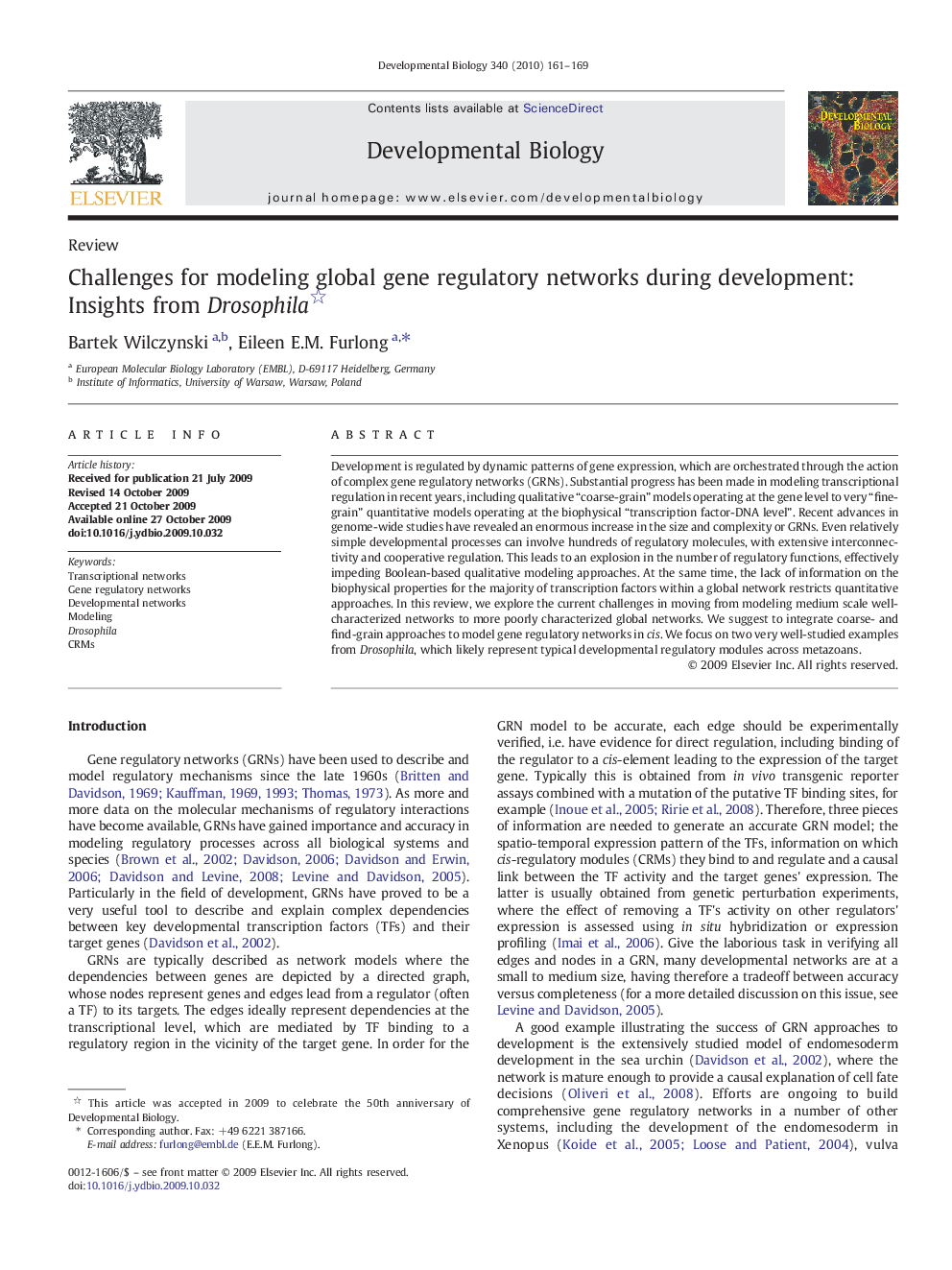| Article ID | Journal | Published Year | Pages | File Type |
|---|---|---|---|---|
| 8468211 | Developmental Biology | 2010 | 9 Pages |
Abstract
Development is regulated by dynamic patterns of gene expression, which are orchestrated through the action of complex gene regulatory networks (GRNs). Substantial progress has been made in modeling transcriptional regulation in recent years, including qualitative “coarse-grain” models operating at the gene level to very “fine-grain” quantitative models operating at the biophysical “transcription factor-DNA level”. Recent advances in genome-wide studies have revealed an enormous increase in the size and complexity or GRNs. Even relatively simple developmental processes can involve hundreds of regulatory molecules, with extensive interconnectivity and cooperative regulation. This leads to an explosion in the number of regulatory functions, effectively impeding Boolean-based qualitative modeling approaches. At the same time, the lack of information on the biophysical properties for the majority of transcription factors within a global network restricts quantitative approaches. In this review, we explore the current challenges in moving from modeling medium scale well-characterized networks to more poorly characterized global networks. We suggest to integrate coarse- and find-grain approaches to model gene regulatory networks in cis. We focus on two very well-studied examples from Drosophila, which likely represent typical developmental regulatory modules across metazoans.
Related Topics
Life Sciences
Biochemistry, Genetics and Molecular Biology
Cell Biology
Authors
Bartek Wilczynski, Eileen E.M. Furlong,
